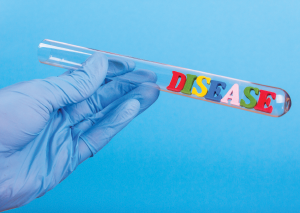WASHINGTON, D.C.—Researchers at the 2016 ACR/ARHP Annual Meeting discussed how they are exploring the immune system in search of groundwork for new rheumatoid arthritis (RA) treatments.
The new avenues, supported by the Rheumatology Research Foundation, involve T cell adhesion, new understanding of the role of macrophages and insights into the way IgG glycans function.
T Cell Adhesion
In one line of research, Adam Mor, MD, PhD, assistant professor of medicine and pathology at New York University, said his lab was seeking to refine therapies that focus on T cell adhesion, a potentially better way of treating inflammation than methotrexate or biologics, which “tend to remove the T cells from the body or kill them,” meaning patients are immunosuppressed.
“Why can’t we just not kill those T cells, not mess with the subpopulation, just remove them [and] prevent them from getting to the joints?” he asked.
A monoclonal antibody-targeting lymphocyte function-associated antigen 1 (LFA-1), a mediator of T cell adhesion, was introduced in 2006 and produced a potent anti-inflammatory effect, but cases of John Cunningham (JC) virus, which leads to the deadly brain infection progressive multifocal leukoencephalopathy (PML), were soon observed in patients. The drug was removed from the market.
Dr. Mor’s lab looked at targeting just one of the two types of T cell adhesion rather than relying on global adhesion. Through a series of experiments, the researchers eventually focused on the phospholipase C epsilon 1 (PLC-e-1) gene. In the absence of this gene, they found, there was no activation of the Rap1 protein, a promoter of T cell adhesion.1 This effect was seen in only one type of adhesion.
Researchers have also found that, in animal models, arthritis scores were lower in the absence of PLC-e-1, “suggesting that this enzyme is required for migration of T cells” to the joint.
“The next step, of course, is to look for drugs that can target PLC-e-1,” Dr. Mor said. His lab is now working on a functional screen in search of small molecules that can do just that.
Researchers believe, he said, that this potential therapy could interrupt T cell adhesion without the risk of JC virus seen with LFA-1 treatment.
“We believe that if you inhibit PLC-epsilon, you’re not going to do anything to the T cell–APC (antigen-presenting cell) interaction, so most of the problems with T cells are going to be fine,” Dr. Mor said. “The only thing is they won’t be able to go to the site of inflammation. More than that, the intervention would be reversible. It’s going to be a small molecule that we can use while [the patient has] inflammation. It’s not going to be a maintenance treatment. And that was different from the LFA-1 antibody.”
In Vivo Modulator of the Glycosylation of Human IgG
In another line of research, Peter A. Nigrovic, MD, associate professor of medicine at Harvard Medical School, described what he said is the first in vivo modulator of the glycosylation of human immunoglobulin G (IgG)—the G0 form of which is pro-inflammatory and has been linked with RA in both humans and mice.
While looking into IgG glycosylation in juvenile idiopathic arthritis (JIA)—in which they found that JIA IgG appears “supercharged” through an excess of G0 and other pro-inflammatory glycans—researchers saw that, in adult healthy controls, G0 levels rose sharply around age 50 in women.
To explore a potential link with menopause, Dr. Nigrovic and colleagues drew from several intervention cohorts in which levels of estrogen were modulated experimentally. Postmenopausal women randomized to estrogen agonists showed a reduction in G0 glycans; however, women randomized to placebo did not.
In a second cohort, premenopausal women were treated with leuprolide, a GnRH agonist that temporarily induces a post-menopausal state, and then randomized to either placebo or estradiol, a form of estrogen. Among those who received placebo, levels of proinflammatory G0 glycans increased. There was no increase among those who received estradiol. Researchers found that estrogen has a similar effect in men, in whom estrogen is derived in large part from conversion of testosterone.
“These data establish conclusively that estrogen drives IgG glycosylation in both women and men, representing a previously unknown link between sex and immunity,” Dr. Nigrovic said. “However, we don’t yet know if this effect reflects direct action of estrogens on B cells or rather an indirect effect mediated by other types of cells.”
Dr. Nigrovic said that the physiological relevance of this estrogen role “remains to be determined.” Because glycans play a key role in the ability of antibodies to cause inflammation, he expects that immune consequences are likely, both for high-estrogen states, such as pregnancy, and low-estrogen states, such as menopause. He also expects the observations to have implications for therapeutic manipulation of hormone levels in both women and men.
The work will be published soon in JCI Insight, he said.
Macrophages in RA

ADragan/shutterstock.com
At Northwestern University, a lab led by Harris Perlman, MD, the chief of rheumatology there, has shown how macrophages have a constantly changing role in the spectrum of RA, from the induction of disease to continuation of disease and the resolution of disease.
Their work has shown how the transcriptional profiles of synovial macrophages change over time. Researchers are now expanding the populations of the macrophages they’re studying as they look to develop gene signatures in those populations and determine how they relate to disease development.
Dr. Perlman said it is now a new age in the understanding of macrophages in RA and that the classic in vitro model of M1 and M2 phenotypes of macrophages, with distinct roles and origins, doesn’t hold for an in vivo understanding of what’s going on.
“We have here a very complex understanding of macrophages,” he said. “Everything is being hit at once, so it’s not a clearly an M1/M2 in vivo system. It’s really a complex set of pathways that are all being activated.”
Thomas Collins is a freelance medical writer based in Florida.
Miss Any of These Important Sessions?
If you missed any of these important sessions, find them on SessionSelect.
References
- Mor A, Dustin ML, Philips MR. Small GTPases and LFA-1 reciprocally modulate adhesion and signaling. Immunol Rev. 2007 Aug;218:114–125.
- Misharin AV, Cuda CM, Saber R, et al. Nonclassical Ly6C(-) monocytes drive the development of inflammatory arthritis in mice. Cell Rep. 2014 Oct 23;9(2):591–604.


